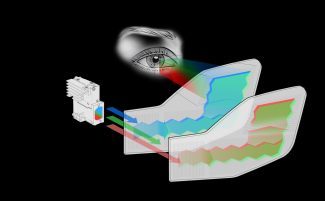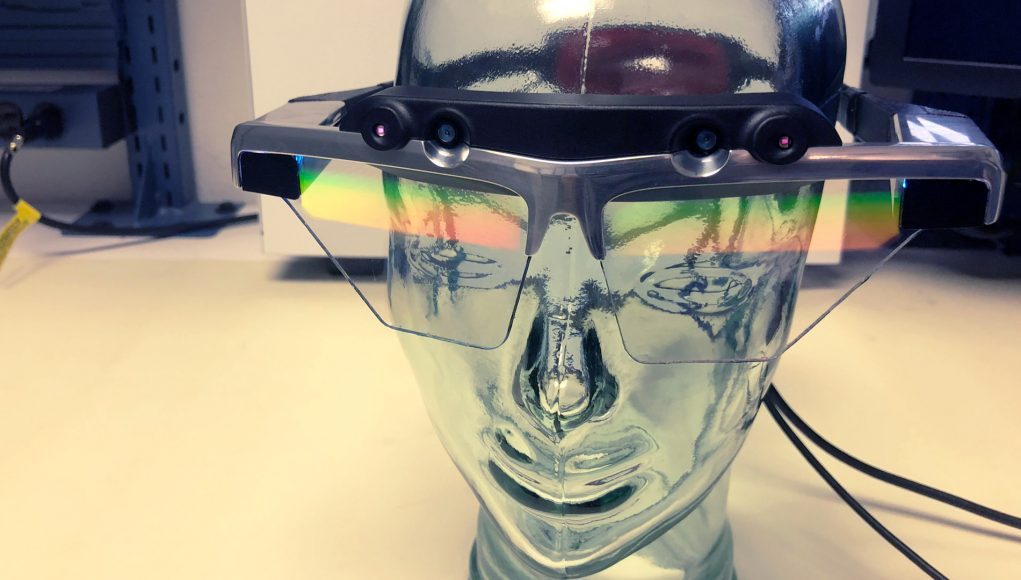DigiLens, a developer of transparent waveguide display technology, is creating a reference headset aimed at wide FOV AR with hand-tracking, dubbed AR HUD. The company showed the first glimpse of the headset at AWE USA 2018.
Bolstered by growing interest in wearables and augmented reality, DigiLens recently announced the closure of a $25 million Series C investment to grow the company which has developed what it says is a proprietary, low cost waveguide manufacturing process.

While the company is focused on automotive and wearable HUD devices in the near term, it’s also focusing on longer term on enabling AR headsets with more immersive fields of view. To that end, DigiLens is building a reference headset which it called ‘AR HUD’—not a product itself, but a demo aimed at other companies who may want to manufacture their own AR headsets which incorporate DigiLens’ technology.
DigiLens Founder & CTO Jonathan Waldern offered a glimpse of the device in a presentation at AWE USA 2018 earlier this month, and shared footage and photos of the AR HUD reference headset with Road to VR.
While the current AR HUD prototype has a leg up on many of the smartglasses on the market today, thanks to its 50 degree field of view (between both eyes), Waldern told me at AWE that the company plans to take the AR HUD headset toward an 80 or 90 degree field of view and next year, using a technique using multiple waveguide gratings for an expanded field of view, the company expects to achieve a 150 degree field of view in its AR reference headset. Waldern also says that such displays could be used equally well in a VR mode by simply blocking out the incoming light.
The AR HUD headset seen above is using one of Leap Motion’s ‘Rigel’ sensors, a reference product itself which brings wide field of view hand tracking to the AR HUD headset. It isn’t clearly demonstrated in the video, but Waldren says the headset does offer 6DOF positional tracking. DigiLens says its in the process of demoing the AR HUD reference headset to potential partners.

While the reference device is quite compact compared to many available or in development AR headsets, DigiLens expects it will be able to further miniaturize the display modules on the left and right of the headset, eventually achieving a truly glasses-sized form-factor. One reason the AR HUD can be so small is that it doesn’t have on-board compute, meaning that it needs to be paired to a host device for rendering, like a computer or portable compute module that could be stored in a backpack, pocket, or on a belt.
The company also touts its high transparency optics as a crucial cultural factor in the widespread adoption of always-on AR headsets—as there’s an underlying discomfort associated with not being able to see the eyes of someone you’re interacting with—compared to other devices which have dimming elements to reduce external light to ensure their image is bright enough to be useful.
Update (6/12/18): A previous version of this article indicated that the video of the early reference headset didn’t appear to include positional tracking, but DigiLens reached out to state that the headset does have 6DOF tracking. This info has been added to the article.







